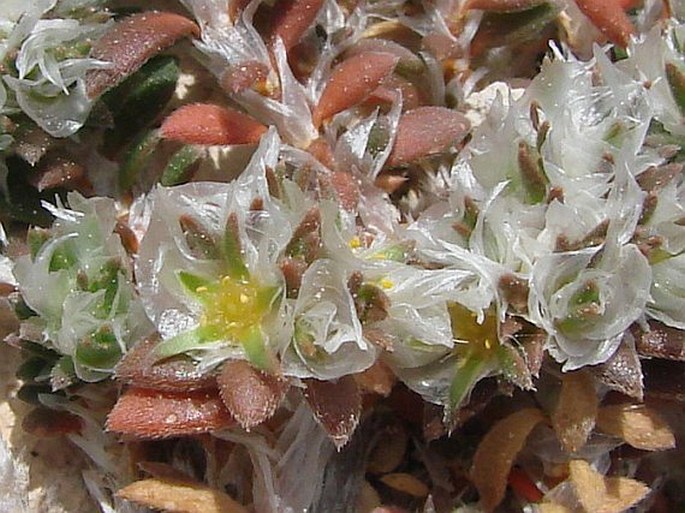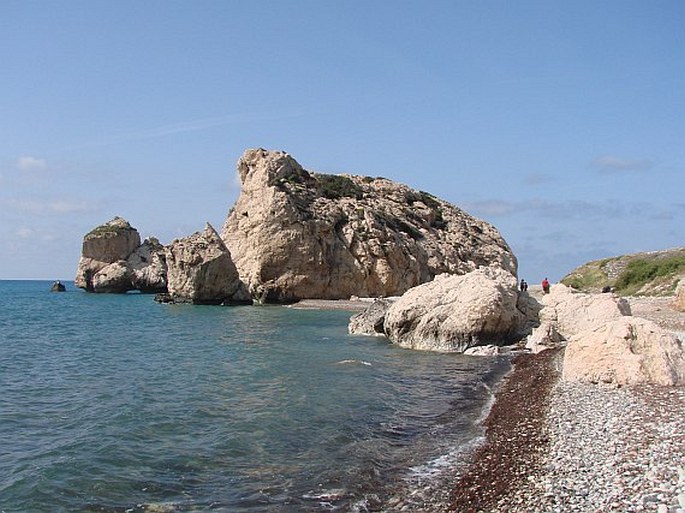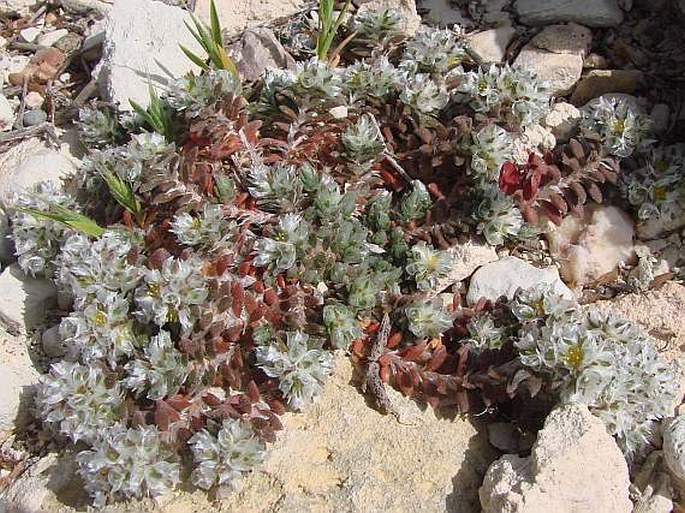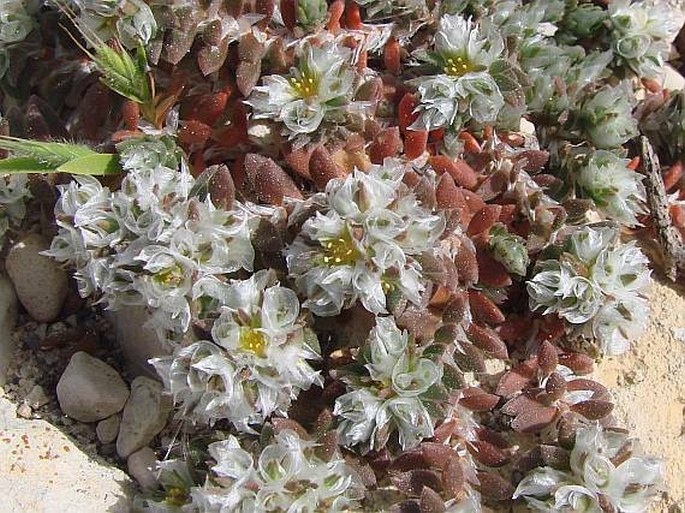Syn.: Paronychia capitata subsp. macrosepala (Boiss.) Maire et Weiller, Paronychia insularum Gand., Paronychia euboea Beauverd et Topali
Family: Caryophyllaceae Juss.

Distribution: Eastern Mediterranean – Greece, Turkey, Cyprus, Sicily, and perhaps Malta and Israel.
Ecology: It grows on coastal sands and dunes, on the rocks and cliffs, from the coast to an elevation of about 2400 m. It flowers from February to June.

Description: Perennial herb, only 2–10 cm tall. Stem prostrate, much-branched, red. Leaves opposite, elliptical to oblanceolate, about 5 mm long, entire. Flowers in terminal or axillary clusters, over 10 mm in diameter, bracts 4.5–6 mm, scarcely concealing the flowers, calyx-lobes very unequal in length, lanceolate. The fruit is an achene with membranous pericarp (utricle).
Note: There are three varieties of this species – P. m. var. macrosepala and var. insularum from the coastal areas, P. m. var. cretica from the higher elevations.


These images were taken in Cyprus, Petra Tou Romiou (March 31, 2010).


